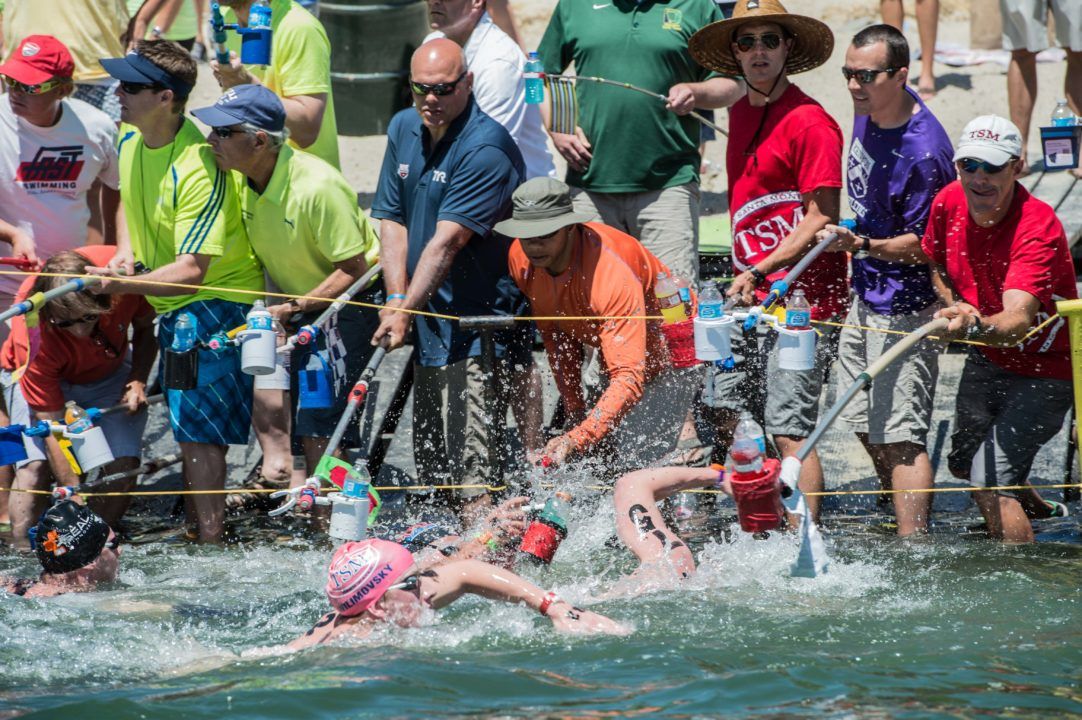The first qualifiers for the 2020 Tokyo Olympics will be named on Sunday – that’s because the 2019 FINA World Championships serve as the first Olympic qualifying event in open water (marathon) swimming.
The women’s and men’s 10K competitions serve as the first direct qualifiers for the 2020 Tokyo Olympics. While the World Championships include a wider range of open water events (5K, 10K, 25K and a team 5K event), the Olympics only include one distance: the marquee 10-kilometer event.
The 2019 World Championships women’s 10K happens on Sunday, and the men’s race on Tuesday. Nations that don’t qualify swimmers through that event have a second chance next summer at the Olympic Qualifier, which will happen in Fukuoka, Japan, per a FINA release this week. There is no official date set yet, but last Olympic cycle, the qualifier happened in June of the Olympic year.
You can read the full document here, but if you’d rather have the bird’s eye view, here’s what the qualifying procedure looks like:
2019 World Championships
- The top 10 finishers in both the women’s and men’s 10Ks will directly qualify for the 2020 Olympics.
- Each nation can only qualify up to 2 men and 2 women this way.
2020 Olympic Qualifier
- Only nations that don’t qualify any athletes through 2019 Worlds can send potential qualifiers here. If a nation qualifies a man but no woman through Worlds, they could only send female entrants to the Olympic Qualifier.
- The top 9 highest-placing women and top 9 highest-placing men will qualify.
- Each nation can only qualify up to 1 man and 1 woman this way.
Continental/Host Quotas
- The final 6 spots ensure that every continent is represented, along with the host nation.
- The top eligible qualifier from each continent in the Olympic Qualifying Race results will qualify.
- Countries that have already qualified one or more athletes cannot qualify another this way. The five continental spots will go to countries that don’t already have an athlete qualified for open water swimming.
- The host country (Japan) will be awarded 1 male and 1 female qualifier. If they’ve already qualified athletes, this final quota spot will go to the next-highest finisher at the 2020 Olympic Qualifier. (Again, no country that already has an athlete in can qualify a second athlete this way – the spot will go to a previously-unrepresented country).
Those criteria can be slightly complicated, so here are a few take-homes:
2019 Worlds is the only chance for a nation to qualify 2 men or 2 women for the 2020 Olympics. If a country can put 2 men or 2 women in the top 10 in the 10K, they’ll both make the Olympic team. If a nation has only 1 swimmer in the top 10, they aren’t allowed to qualify a second one at the 2020 Qualifier or through the continental or host quota spots.
If a nation doesn’t qualify through 2019 Worlds, they can only qualify 1 man and 1 woman through next year’s Olympic Qualifier. The entrants to that race can be different than the entrants in the 10K here. So for the athletes who made their national World Championships roster in the 10K, they need to be top 10 and qualify for the Olympics here, or risk having their spot stolen by an athlete not on the World Champs roster who moves up and beats them next summer.
Here are the dates and times of the Olympic qualifying open water events at 2019 Worlds:
- Women’s 10K: Sunday, July 14 – 8 AM local time / 6 PM Saturday in U.S. Central Time
- Men’s 10K: Tuesday, July 16 – 8 AM local time / 6 PM Monday in U.S. Central Time
